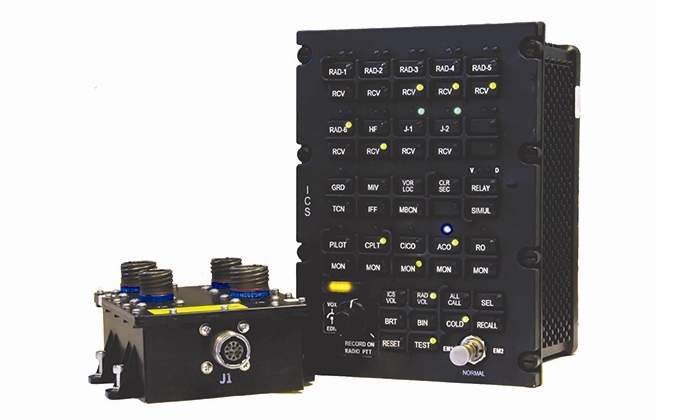
With types of threats changing and evolving all the time, how does ICSG ensure that its products meet the needs of military personnel?
David E McCoy: Our product has initially been several generations ahead. We incorporate technology that made it flexible and ergonomic in meeting the needs as the years go by. We actually continue product improvement to keep up with technology changes.
For this, we have continual communication with the customer to make sure that their needs are being met. And the other, as products change in the industry, we update our system to reflect those changes. We do have some commercial aspect within our design. So we make sure that we maintain the system with the changes that the commercial market reflects.
What are the advantages of the AN/AYQ-27 communications system?
DEM: The legacy ICS systems have a centralised controller. That creates an issue if the centralised controller goes down, that vehicle – whether it’s land-based, sea-based, or airborne – loses all communication.
Within our system, we have decentralised intercommunications, where each position is autonomous, as well as have the ability to interconnect and communicate with the other positions.
That gives it a robust structure in the sense that for communication to be completely lost in the vehicle, each one of those positions must fail.
Each position has a secondary unit. So if you have five positions within that vehicle, it would require ten major failures for communication to be completely lost.
The other advantage is that we utilise fibre-optics within our system. That helps to eliminate a high number of copper wires.
That increases the durability and reliability of the system. It reduces weight within the vehicle and also increases its protection against electromagnetic interference and the security of the signals. Each position is autonomous. It can function as a single station system, or the system can be expanded up to 32 stations. That gives you the ability to have approximately 100 channels connected to your system.
How does it reduce fatigue and improve situational awareness for operators?
DEM: We have binaural audio capability. Binaural audio allows the operator to selectively set individual audio channels within their left or right ear. So they could set one particular radio to be in their left ear and six other radios to be in their right ear, for example.
If that one radio in the left ear is the main radio, that they have to pay most attention to, they don’t have to try to decipher the information as you would when multiple radios are in the same ear at the same time. They would have a clear channel to that radio. At the same time, being able to listen to six other radios in the other ear.
Also, you have the ability to set each radio to its own individual volume level. So your primary radio can be louder than the radios others just in case that communication is more critical. What that does is it prevents the need to have this keen listening process throughout the mission, which could be tiresome. Just imagine trying to listen to one person within a crowded environment. That takes a lot more effort than just simply just getting a clear channel to an individual without any other interference.
What can you tell us about its self-healing fibre channel design?
DEM: The system utilises a ring topology to connect each station to each other. So they pass data in two directions. If, for any reason, the fibre gets cut in one direction, the system would sense that and find an alternate path to all the stations in the other direction.
It basically reconnects itself in another direction. If for any reason that the fibre is cut at both ends of the unit, then it reconfigures itself to operate as a standalone unit and maintain communication with the operator on the channels that are connected directly to that unit.
How long did it take to develop? And what has the feedback been like?
DEM: It took us about seven years in total to our first flight. There were several processes. We got this programme through an SBIR initiative, which is a small business innovative research programme that the US Government has in place. We presented an SBIR topic and then competed for that topic, which we won. So in the initial two years, we were developing the concept and prototype of the ICS. And that lead us into the other stage of proven manufacturability.
But basically, the commercialisation capability of this product took another two years. We competed for the opportunity to be on the current E-2D aircraft for the navy. And we had to make modifications specifically for that aircraft. So that took us another three years to get to that point before we got to first flight.
It’s now operating on the E-2D aircraft, which is one of the most advanced aircraft the military has to date. The system has been flying on the aircraft since 2007.
The quality of the audio is near CD-like. Very clear digital audio. That gives them the ability to distinguish communication pretty well. One operator actually explained that with all the advanced technology that’s within that aircraft, the one thing that stood out for him the most was the ICS.
We constantly look for opportunities to support our customer in addressing issues. Through R&D projects, we’re looking for improvements in our current products and the development of new products as the market demands.



